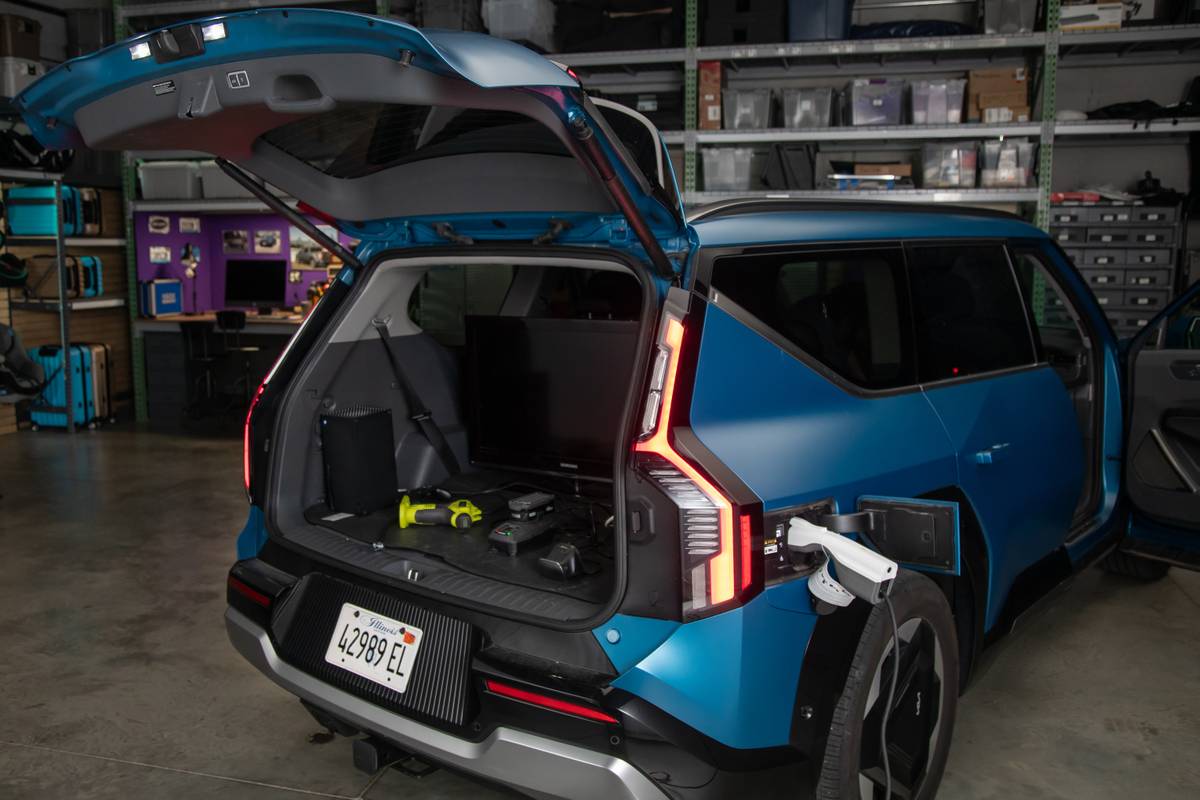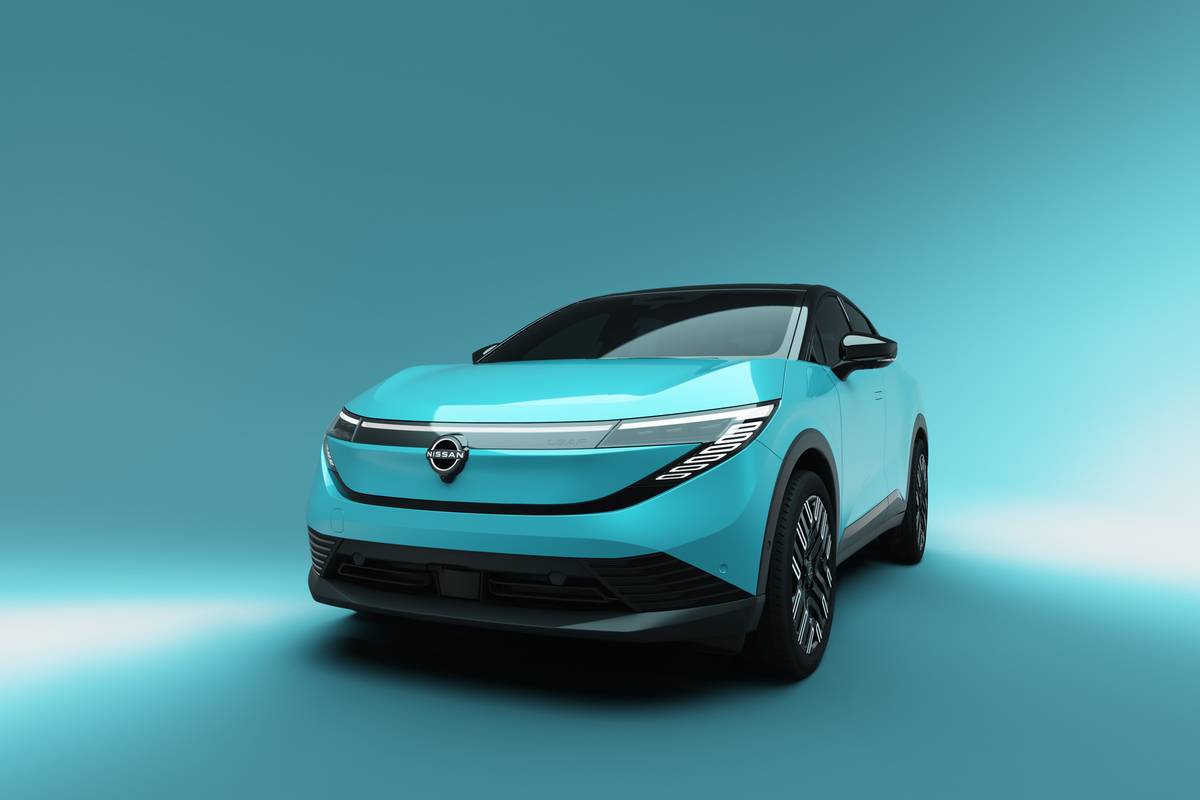TheMercuryNews.com's view
Chrysler’s PT Cruiser was a smash success, thanks to its yesteryear-yearning design, its flexible interior packaging and a base price (in 2000) around $16,000. The 2004 Chrysler Pacifica, which goes on sale this month, could be just as successful.
Note the uncertainty of the previous sentence. While the PT Cruiser was a slam dunk once its price was announced, the Pacifica sport wagon is a more expensive, more ambitious vehicle.
Priced at $31,230 for front-wheel-drive and $32,980 for all-wheel-drive, the six-passenger Pacifica is another marvel of slick design and clever packaging from Chrysler.
But with the Pacifica and the Crossfire coupe that arrives this spring, Chrysler moves upscale into a murkily defined position somewhere between mainstream and luxury.
“Chrysler is our premium brand. I position premium as a step above the mainstream brands. I think premium is a key word,” said Tom Marinelli, Chrysler’s vice president of marketing. “We don’t want to be a luxury brand.”
That’s because DaimlerChrysler already has a luxury brand, Mercedes-Benz. It also has a mainstream brand, Dodge. So into a showroom that features a (now) $17,410 PT Cruiser comes two models that’ll cost nearly twice as much.
The Pacifica arrives first, and I had a chance to drive it on hundreds of miles of roads in San Diego County, from ritzy La Jolla to remote Ramona, last month.
Here’s my first impression: This is a vehicle that looks great and tells a good story when it’s standing still. On the road, it’s somewhere between adequate and good. Overall, it’s a 3.5 to four on a five-star scale.
On the outside, the Pacifica is very appealing with a nice mix of European subtlety and an in-your-face American front end. The large grille and headlights are accented by Chrysler’s bold winged badge. The shape immediately says sport wagon (or cross-over utility) in the vein of the Lexus RX300, Acura MDX and Volvo XC90, but it’s perhaps a bit more athletic than those others.
But only when you park next to one of those omnipresent RX/MDX/XC vehicles do you realize that the Pacifica is much larger — 10 inches longer than the MDX and a full foot-and-a-half longer than the RX300. The Pacifica is much wider than anything in this segment, too, including the Honda Pilot and Audi’s allroad.
On the inside, the Pacifica nicely combines a sports-sedan-like cockpit with the flexibility of a modern sport-utility or a minivan. In the $37,510 all-wheel-drive model I tested, the interior had leather seats and fashionable wood and metallic trim.
While the audio and climate controls, and even the AutoShift transmission that allows gear-shifting without a clutch, are familiar Chrysler designs, the instrument panel is new. The analog clock is a nice, classy touch. But the best bit is the vehicle’s optional navigation system. For the first time, an automaker has positioned the map screen under th e speedometer in the center of the dash board. The benefits are twofold: One, it’s easier to read without having to shift your eyes off the road to a large screen in the center of the dash. Two, it makes the dashboard a much more elegant affair as there’s nothing like a seven-inch screen to dull a design.
The Pacifica’s front seats are firm and supportive without being too hard. In short, they’re perfect for driving. Chrysler designers extended that goodness to the second-row bucket seats, which many automakers neglect.
The third row has two more seats that’ll be perfect for older children and smaller adults, but less so for those over 6 feet tall. Actually, shoulder and leg room is adequate, and getting back there is an easy task, but head room is a bit short. Blame the Pacifica’s power rear lift-gate for hogging space.
Not surprisingly from the company that invented both the minivan and the PT Cruiser, the Pacifica is chock-full of convenience and utility. Both the second and third-row seats fold flat, creating a huge cargo space (79.5 cubic feet).
There are a dozen cup, bottle and juice-box holders and lots of storage bins.
Safety-wise, the Pacifica comes with a three-row side-curtain air bag as standard equipment as well as front, side and a driver’s knee-blocker air bag. There’s also a tire-pressure-monitoring system, four-wheel anti-lock brakes and either front-drive with traction control or all-wheel-drive.
On the road, the Pacifica feels solid. The suspension is both strong and nimble so that you don’t feel the heaviness — 4,675 pounds for the AWD model, and 4,393 to 4,482 pounds for the front-wheel-drive version — of the vehicle. Steering is well-balanced. This is an SUV — OK, that’s what I’m going to call it despite Chrysler’s insistence that it’s a sports tourer — that handles curvy roads with aplomb.
And the vehicle’s 250-horsepower, 3.5-liter V-6 is a proven powerplant, the same one that’s in Chrysler’s excellent 300M sedan.
So what’s not to like? On steep inclines, the Pacifica’s four-speed automatic transmission was less than satisfying. Hills that wouldn’t challenge a MDX or an RX perplexed the Pacifica. Acceleration, quite good on flat roads near the Pacific coast, was less good out in the hills.
The transmission hunted for the right gear. Shifting with AutoShift from fourth to third eliminated this problem but there still wasn’t enough oomph for my driving taste. Stabbing the accelerator in search of more power resulted in a loud roar and an unpleasant burp of power. I would imagine a vehicle with six adults and/or a full cargo load would be even less likable. Perhaps a five- or six-speed automatic is the answer.
Chrysler clearly positions the Pacifica as an alternative to the Acura MDX, Lexus RX, Volvo XC90 and others.
Having had a chance to drive these vehicles right after the Pacifica, I realized they are smaller than the Pacifica. Some don’t have three rows of seats, and the ones that do are much harder to get in and out of than the Pacifica’s set-up. And all are more expensive than the Pacifica.
Still, a base Pacifica will cost $31,000-$33,000, and one with goodies like a navigation system, a rear-seat DVD entertainment system, a fancy Infinity Intermezzo 5.1 digital surround-sound stereo, Sirius satellite radio, a power rear lift-gate and second-row heated seats will likely cost close to $40,000. There’s tremendous competition for car-like SUVs in that price range.
With a manufacturing capacity of 100,000 to 120,000 units a year, Chrysler intends for the Pacifica to become one of the bestsellers in its segment. Lexus sold 73,000 RX300s in 2002. Acura sold 53,000 MDXs. BMW dealers sold 43,000 X5s, while Mercedes-Benz sold about 40,000 MLs. Among mainstream makers, Toyota sold 113,000 Highlanders, Buick sold 62,000 Rendezvous models and Honda sold 52,000 Pilots.
To me, the Pacifica is a bold step forward that moves Chrysler into an upscale neighborhood where folks are wearing brass knuckles under their velvet gloves. That’s a tough neighborhood.
Latest news



